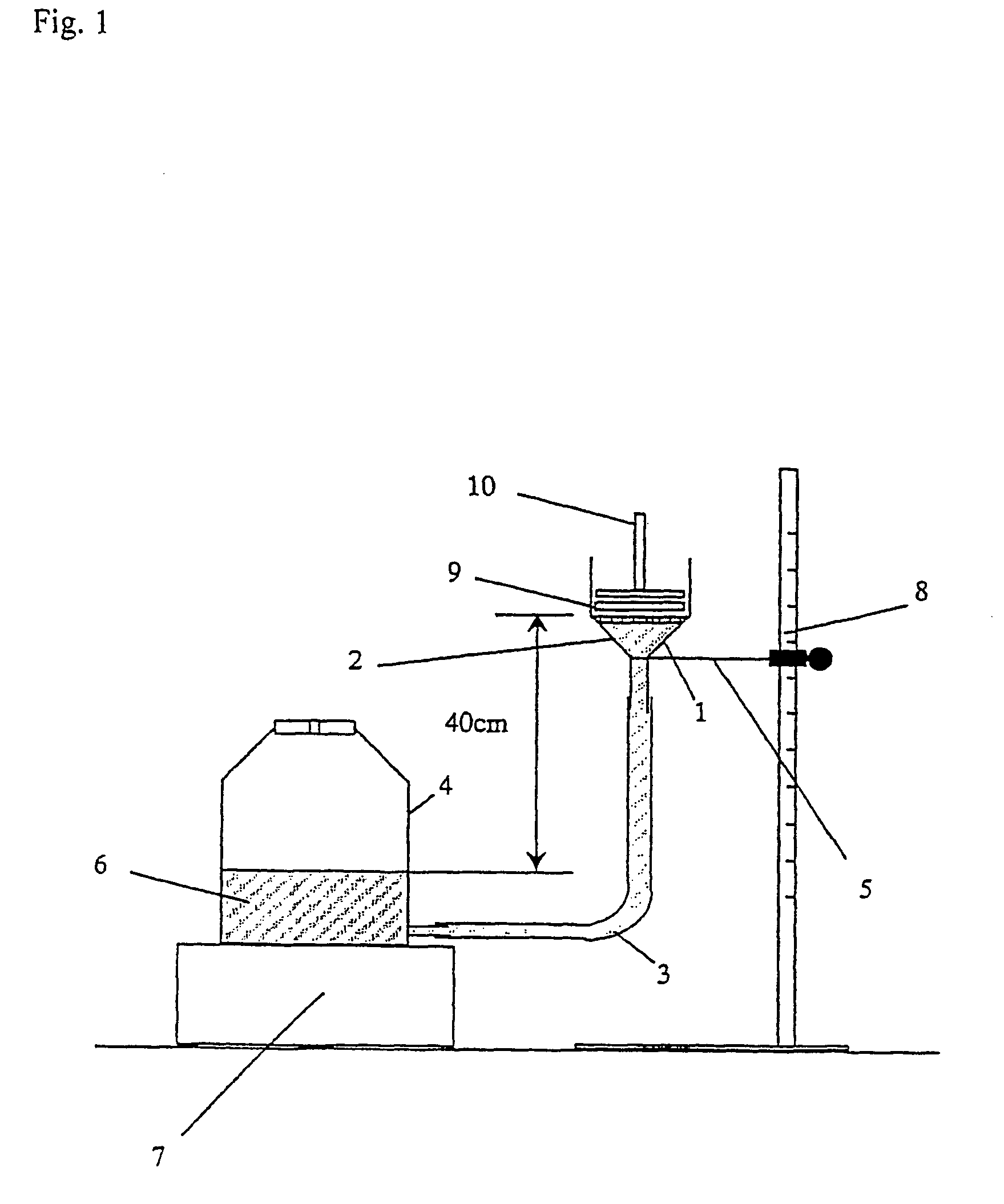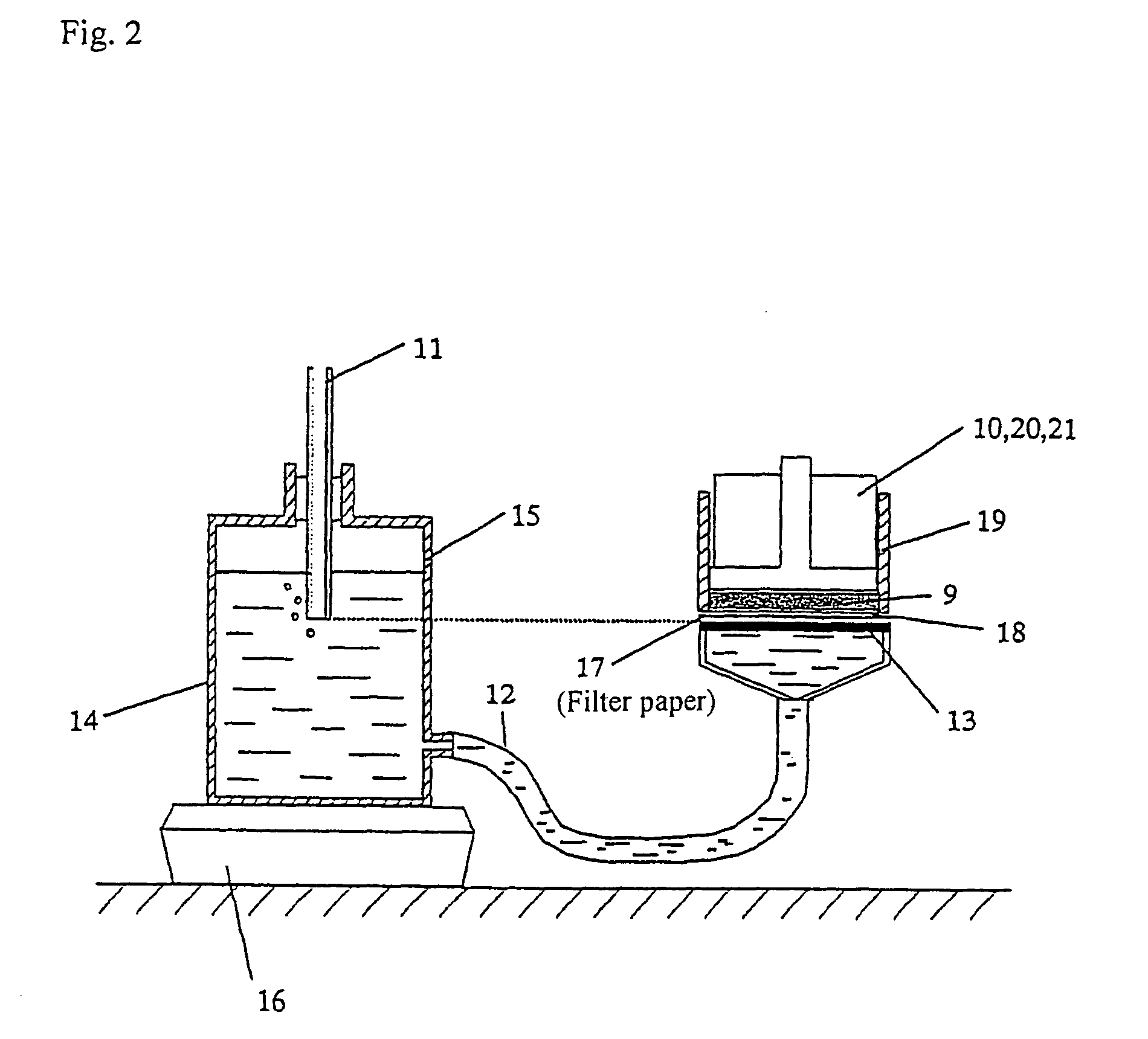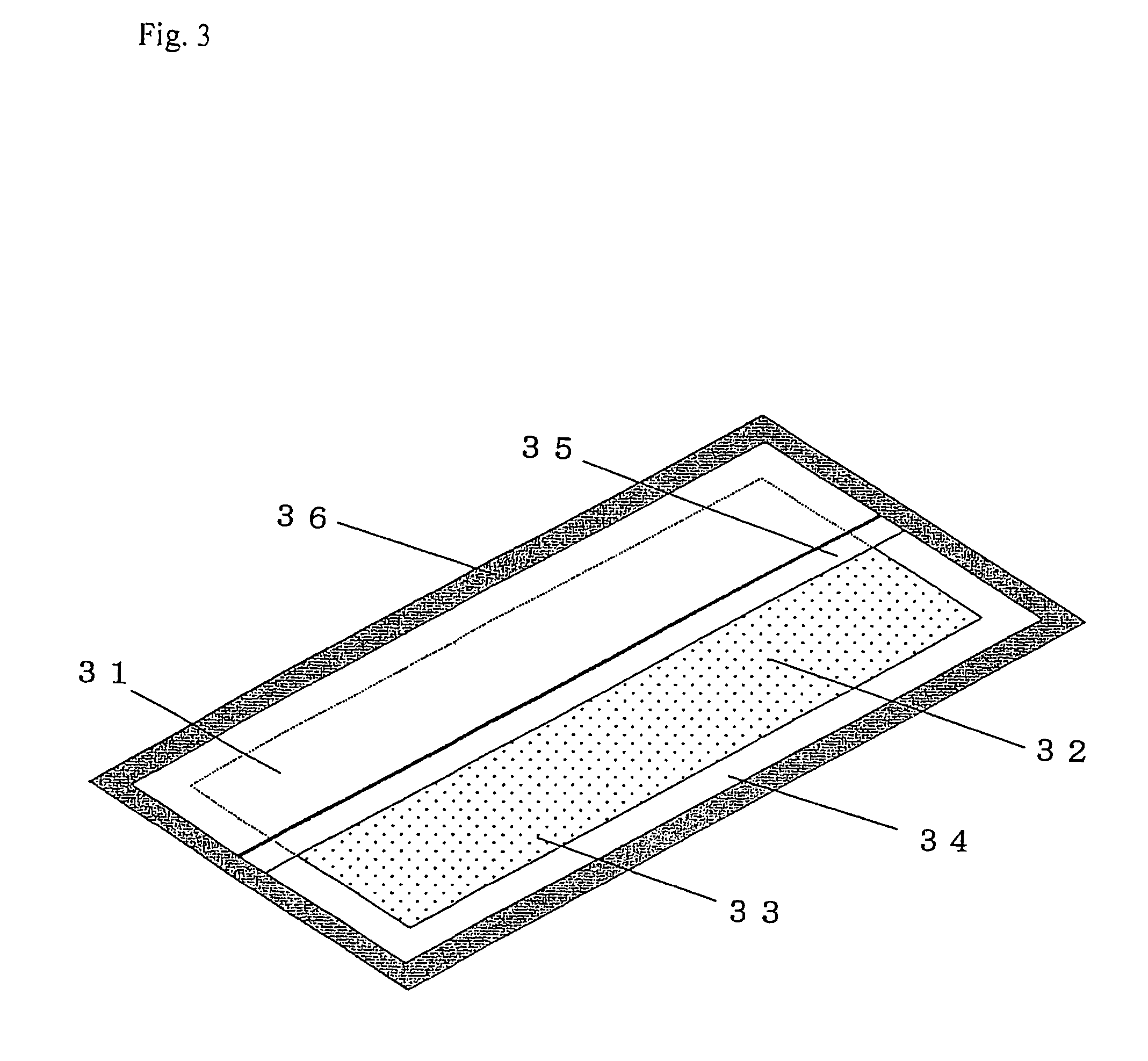Absorbent structure, absorbent article, water-absorbent resin, and its production process and evaluation method
a technology of absorbent articles and water-absorbing resins, which is applied in the direction of instruments, bandages, material analysis, etc., can solve the problems of limited hydrophilic fiber and water-absorbing resin ratio, inability to efficiently act as liquid-storing members, and limitation of thinning sanitary materials, etc., to achieve excellent liquid diffusion ability and liquid storage ability.
- Summary
- Abstract
- Description
- Claims
- Application Information
AI Technical Summary
Benefits of technology
Problems solved by technology
Method used
Image
Examples
referential example 1
Production Process for Water-Absorbent Resin (1)
[0262]An aqueous monomer solution having a monomer concentration of 35 weight % and a neutralization ratio of 75% was obtained by using 21.6 parts of acrylic acid, 228.6 parts of 37 weight % aqueous sodium acrylate solution, 0.0185 part of N, N′-methylenebisacrylamide (0.01 mol % relative to monomer), 0.106 part of hydroxyethyl cellulose, and 53 parts of deionized water. Then, 0.09 part of potassium persulfate was dissolved in this aqueous monomer solution, and a nitrogen gas was blown thereto to remove dissolved oxygen.
[0263]In a four-necked separable flask as fitted with a stirrer, a reflux condenser, a thermometer, a tube for introducing a nitrogen gas, and a dropping funnel, 800 parts of cyclohexane was weighed out, and 4 parts of a sucrose fatty acid ester (HLB=6) was added thereto and dissolved, and then a nitrogen gas was blown thereto to remove dissolved oxygen. Subsequently, the aqueous monomer solution was added to the above ...
referential example 2
Production Process for Water-Absorbent Resin (2)
[0264]A reaction liquid was obtained by dissolving 5 parts of polyethylene glycol diacrylate (n=8) into 5,500 parts of aqueous sodium acrylate solution having a monomer concentration of 33 weight % (neutralization ratio: 75 mol % / o). Next, this reaction liquid was deaerated under an atmosphere of nitrogen for 30 minutes. Subsequently, the above reaction liquid was supplied to a jacketed stainless-steel-made twin-arm kneader having: an lid that can be opened and shut; and two sigma type blades, and the system was replaced with a nitrogen gas while the reaction liquid was maintained at 30° C. Subsequently, 2.4 parts of ammonium persulfate and 0.12 part of L-ascorbic acid were added thereto while the reaction liquid was stirred, and then the polymerization was started after about one minute. Then, the polymerization was carried out at 30 to 90° C. After 60 minutes from the start of the polymerization, the resultant hydrogel polymer was ta...
referential example 3
Production Process for Water-Absorbent Resin (3)
[0267]A reaction liquid was obtained by dissolving 8.1 parts of polyethylene glycol diacrylate (n=8) into 5,500 parts of aqueous sodium acrylate solution having a monomer concentration of 38 weight % (neutralization ratio: 71 mol %). Next, this reaction liquid was deaerated under an atmosphere of nitrogen for 30 minutes. Subsequently, the above reaction liquid was supplied to a jacketed stainless-steel-made twin-arm kneader having: an lid that can be opened and shut; and two sigma type blades, and the system was replaced with a nitrogen gas while the reaction liquid was maintained at 30° C. Subsequently, 2.4 parts of ammonium persulfate and 0.12 part of L-ascorbic acid were added thereto while the reaction liquid was stirred, and then the polymerization was started after about one minute. Then, the polymerization was carried out at 20 to 95° C. After 60 minutes from the start of the polymerization, the resultant hydrogel polymer was ta...
PUM
| Property | Measurement | Unit |
|---|---|---|
| Length | aaaaa | aaaaa |
| Fraction | aaaaa | aaaaa |
| Pressure | aaaaa | aaaaa |
Abstract
Description
Claims
Application Information
 Login to View More
Login to View More - R&D
- Intellectual Property
- Life Sciences
- Materials
- Tech Scout
- Unparalleled Data Quality
- Higher Quality Content
- 60% Fewer Hallucinations
Browse by: Latest US Patents, China's latest patents, Technical Efficacy Thesaurus, Application Domain, Technology Topic, Popular Technical Reports.
© 2025 PatSnap. All rights reserved.Legal|Privacy policy|Modern Slavery Act Transparency Statement|Sitemap|About US| Contact US: help@patsnap.com



